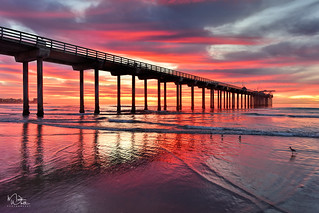This is the first in a series of seven blog posts that communicates about climate change through personal stories. In this post we cover the motivation behind the project and what to expect over the course of the next six weeks.
Climate change is a well-documented phenomenon that scientists have studied extensively over the years. They have predicted changes that are going to occur both short term and long term, especially in coastal oceans and communities where nearly 40% of the world’s population lives. Although there have been many scientific studies and comprehensive reports documenting climate change and its effects, especially in California, 38% of Americans do not think climate change is affecting them personally (Pew Research Center, 2020). This can fuel a lack of awareness about how climate change may be impacting people and their communities, which in turn can impede solutions. Instead, it may be personal experiences with climate change that may motivate people to take action in their daily lives to help combat it.
This idea of engaging individuals in environmental solutions has interested me long before beginning my education at UC Berkeley. I grew up in an inner-city neighborhood of San Diego called City Heights, an interesting mix of urbanization and treasured open spaces that spread throughout the city. Unfortunately, the local canyons have suffered from many urban challenges—wildfires, trash, encampments, illicit activities, and pollution—threats to the safety of my community and our ability to enjoy these spaces. All it took was some motivation and coordination by local non-profits (Ocean Discovery Institute, San Diego Canyonlands)- who pointed out the personal impacts that these challenges were having on residents and that they could do something about it together. Over the next year, these canyons were transformed into cleaner, safer spaces. This is, of course, an ongoing effort, but the community was activated and till this day remains one of the most engaged communities in environmental stewardship than anywhere else in the city.

This is why I was excited to learn about a recent project, conducted by UCSD student Caitlyn Crowe, with the help of Theresa Talley at California Sea Grant, that gathered information from seven long-time beach users in San Diego County about the ways that climate change has been affecting them personally. Over the course of about 12 weeks, Caitlyn interviewed seven long-time beachgoers, with nearly four decades of regular ocean swimming or surfing experience. She asked them about their beach use patterns, sources of climate, weather and ocean information, changes in short- and long-term beach and coastal changes, and local and global climate change knowledge. She then integrated simple scientific explanations to their insights in an effort to enhance awareness and create more of an individual connection to climate change through the use of a personal lens.
Over the next six weeks, I will share these people’s insights and a little bit of the science surrounding major climate change effects, including sea level rise, increased ocean temperatures, ecology changes, coastal erosion, changes in water quality and harmful algal blooms. I will conclude in the seventh week with suggestions of how you can personally help to combat climate change. Stay tuned!




